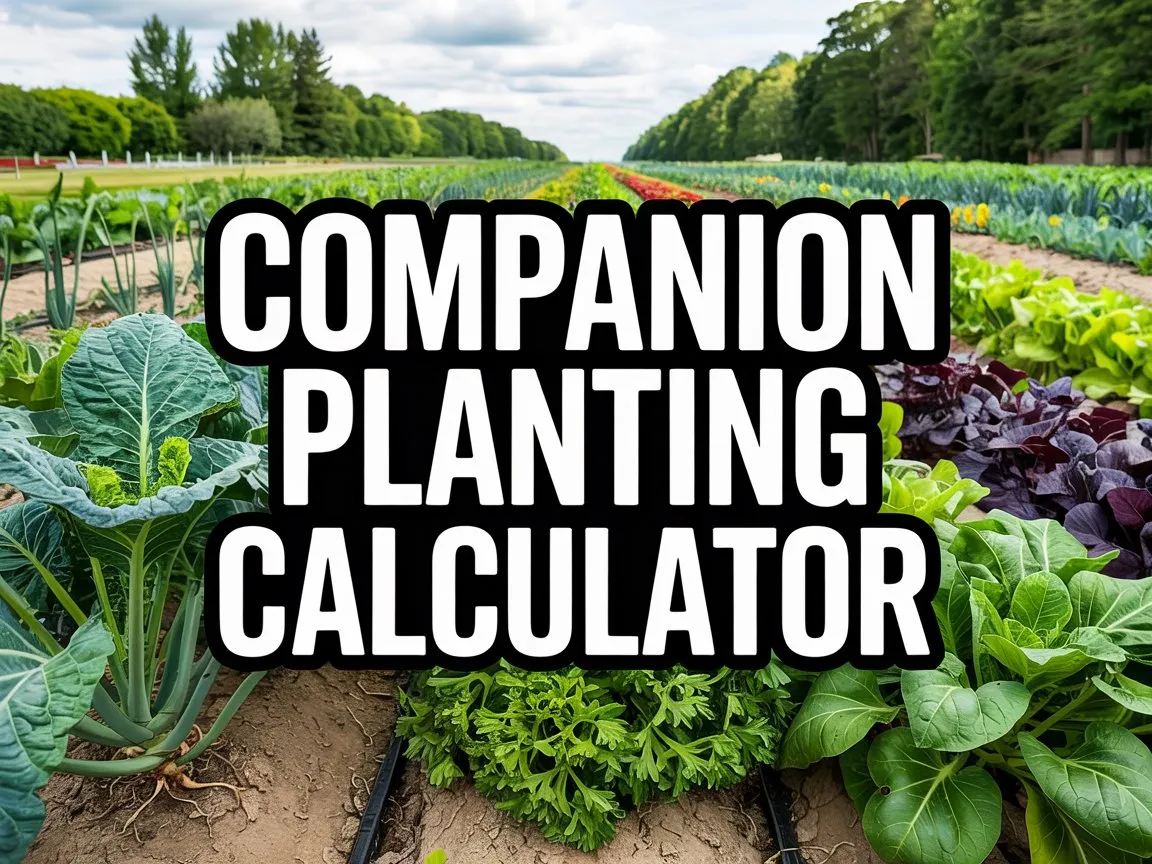HOW TO USE:
1. Select vegetables from the dropdown
2. Click “Add Vegetable” button
3. Click “Calculate Companions”
4. Use “Reset” to start over
Are you looking to maximize your garden’s potential? Understanding which plants grow well together can dramatically improve your yields, reduce pest problems, and create a more resilient garden ecosystem. In this comprehensive guide, we’ll explore companion planting calculators and charts to help you design the perfect garden layout.
What Is Companion Planting?
Companion planting is the strategic practice of growing certain plants near each other for mutual benefit. This age-old gardening technique takes advantage of natural plant relationships to:
- Deter pests naturally
- Attract beneficial insects
- Improve soil health
- Enhance flavor of vegetables and herbs
- Maximize space in your garden
- Provide shade or structural support
Why Use a Plant Compatibility Calculator?
While experienced gardeners might memorize common plant pairings, a plant compatibility calculator takes the guesswork out of companion planting, especially for beginners. These tools quickly identify which plants:
- Make good neighbors
- Should be kept apart
- Can protect each other from specific pests
- Share similar growing conditions
Popular Companion Planting Combinations
Before diving into calculators and charts, let’s explore some classic companion planting pairs:
- Tomatoes + Basil: Basil repels tomato hornworms and improves tomato flavor
- Carrots + Onions: Onion family plants deter carrot flies
- Beans + Corn: Beans fix nitrogen that corn needs, while corn provides support
- Marigolds + Most Vegetables: Marigolds deter nematodes and many insect pests
- Nasturtiums + Squash: Nasturtiums act as trap crops for aphids
Finding the Right Companion Planting Chart
Many gardeners prefer using a companion planting chart for quick reference. Whether you’re looking for a free companion planting chart online or a more detailed companion planting chart PDF to print, there are plenty of options available.
The most useful charts typically include:
- Clear visual organization (often in grid format)
- Color coding for good, neutral, and bad plant combinations
- Specific benefits of plant pairings
- Seasonal planting information
For vegetable gardens specifically, a vegetable companion planting chart provides focused information on food crops and their ideal neighbors.
Creating Your Companion Planting Garden Layout
Once you understand which plants work well together, the next step is designing your companion planting garden layout. Here’s a simple process:
- List all the plants you want to grow
- Use a companion planting calculator to identify compatible groupings
- Consider sun exposure, water needs, and mature plant sizes
- Sketch your garden beds with plant groupings
- Include paths for maintenance access
- Plan for succession planting where appropriate
Using a Companion Planting Calculator
A good plant compatibility calculator saves time and prevents common gardening mistakes. These tools typically work by:
- Selecting the plants you want to grow from a database
- Analyzing compatibility based on established companion planting principles
- Generating recommendations for optimal plant arrangement
- Providing explanations for why certain plants work well together
Many online calculators are free to use and offer basic functionality, while more sophisticated tools may offer additional features like garden layout visualization, seasonal planning, and detailed compatibility explanations.
Beyond Vegetables: Companion Planting Chart for Flowers
While many gardeners focus on vegetable companions, a companion planting chart for flowers is equally valuable. Flowers can:
- Attract pollinators to increase vegetable yields
- Draw beneficial insects that prey on garden pests
- Add beauty while serving practical purposes
- Repel problematic insects through their scents
Popular companion flowers include:
- Marigolds
- Nasturtiums
- Calendula
- Borage
- Cosmos
- Zinnias
- Sunflowers
Creating Your Own List of Companion Plants
As you gain experience, you might want to create a personalized list of companion plants based on your specific growing conditions and objectives. Keep a garden journal noting which combinations worked well and which didn’t. This personalized approach often yields better results than generic recommendations.
Companion Planting Resources
For those who want to dive deeper, consider these additional resources:
- Vegetable companion planting chart PDFs for printing and reference
- Free companion planting charts from university extension offices
- Mobile apps that function as portable plant compatibility calculators
- Garden planning software with built-in companion planting features
- Books dedicated to companion planting principles
Conclusion
A companion planting calculator or chart is an invaluable tool for gardeners of all experience levels. By understanding which plants support each other and which compete, you can create a more productive, resilient, and ecologically sound garden.
Whether you prefer a detailed PDF chart or an interactive online calculator, these resources will help you make informed decisions about plant placement. Start with known compatible combinations, experiment with new pairings, and observe how your garden’s health improves when you work with nature’s inherent relationships.
Remember that companion planting is both an art and a science—the more you practice, the better you’ll become at creating harmonious plant communities that thrive together.

